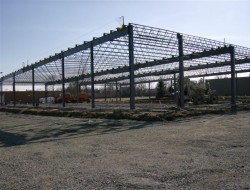Want a Safer Job Site? Take a Look at Near Misses
Many people are surprised to learn that reporting near misses, sometimes known as close calls, can help to make a job site safer. While recording near misses is not required by the Occupational Safety and Health Administration, that doesn’t mean it is not in a company’s best interest.
When near misses are tracked, it can give management insight into how to make the workplace safer for everyone. After all, in most cases, a near miss could just as easily have been an accident.
An accident is an unplanned, undesired event that halts work and is in many cases responsible for an injury, illness or property damage. When an accident occurs, it is reported and investigated to see what led up to, and ultimately caused, it. This investigation helps to make sure it doesn’t occur again.
When a near miss isn’t reported, you may have escaped injury, illness or property damage but you also may never know what led up to the near miss. In other words, going forward a near miss can be worse than an accident because there is nothing set in motion to make sure the same circumstances don’t arise again.
Just as accidents are preventable in the workplace if the necessary adjustments are made, near misses that are reported and investigated can also make the workplace safer. Of course, in order for near misses to be reported, employees must be encouraged to report such incidents and be assured that they will not be penalized or ostracized for doing so.
Understanding near misses will help to educate employees on proper safety procedures. It also will help to prevent accidents because near misses, in most cases, can lead to an actual accident if what led up to the near miss isn’t corrected. Further, there is nothing better than being able to coach employees on how to deal with a real hazard without having one actually occur.
Most safety experts will advise companies to encourage their employees to report near misses. If your company does not encourage near miss reporting, it is missing out on a critical opportunity to keep your employees and your work site safe.

